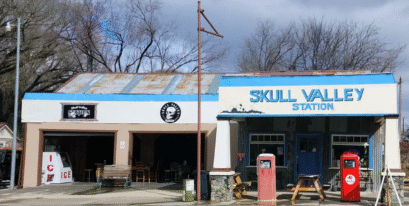A typewriter is a mechanical or electromechanical machine for writing characters similar to those produced by printer’s movable type. Typically, a typewriter has an array of keys, and pressing one causes a different single character to be produced on the paper, by causing a ribbon with dried ink to be struck against the paper by a type element similar to the sorts used in movable type letterpress printing.
Commonly a separate type element (called a typebar) corresponds to each key, but the mechanism may also use a single type element (such as a typeball) with a different portion of it used for each possible character. At the end of the nineteenth century, the term typewriter was also applied to a person who used a typing machine.
The first commercial typewriters were introduced in 1874, but did not become common in offices until after the mid-1880s. The typewriter quickly became an indispensable tool for practically all writing other than personal handwritten correspondence. It was widely used by professional writers, in offices, and for business correspondence in private homes.

A mechanical calculator, or calculating machine, is a mechanical device used to perform automatically the basic operations of arithmetic. Most mechanical calculators were comparable in size to small desktop computers and have been rendered obsolete by the advent of the electronic calculator.
An adding machine Is a class of mechanical calculator, usually specialized for bookkeeping calculations. In the United States, the earliest adding machines were usually built to read in dollars and cents.
Datenails were tagging devices utilized by railroads to visually identify the age of a railroad tie. Different railroads used different sized nails with either alpha or numerical markings. An example would be a Santa Fe Railroad nail with the marking “01” stamped on the head of the nail. The “01” would identify the nail as being hammered into a railroad tie in the year 1901.
Datenail use has dropped dramatically since the mid-20th century and the advent of more modern maintenance of way equipment. Ties are no longer marked in this manner in North American practice, and the nails themselves are now sought after by collectors.
